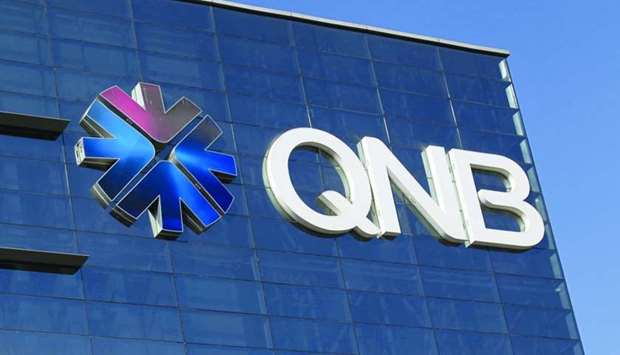The current ‘Goldilocks scenario’ for the global economy will continue for longer, QNB has said in an economic commentary.
“Like Goldilocks in the old British tale, most investors prefer an economy that resembles a good porridge, neither too hot nor too cold, but ‘just right’, QNB noted.
In macro terms, this translates into an ideal scenario of moderate growth with high employment and low inflation. In other words, an economy that is hot enough to propel or maintain earnings growth, but cool enough to keep monetary authorities from tightening policy.
This is relevant as policy responses to inflation pressures coming from overheated economies have often caused both recessions and bear markets.
“Goldilocks is therefore a comfortable scenario of persistent growth prospects with low downside risks. There is little doubt that at some point in Q3 last year global recession/deflation fears were reversed by more aggressive monetary policy easing and positive developments in trade negotiations,” QNB said.
Since then, the economic expansion cycle gained further support with almost all major asset classes rallying. This can be observed in the sharp rebound of the Sentix global aggregate economic index from a position that was negative and deteriorating to one that is positive and improving.
The index tracks investor sentiment about economic activity. Downturn fears suddenly turned into a condition that is “just right.” But can the sweet spot continue for long?
In QNB view, the Goldilocks scenario is likely to continue well into 2020 and it has laid out four reasons that underpin its position.
First, major central banks are unlikely to reverse recently implemented accommodative measures. Chances of a significant “inflation scare” are slim due to the persistence of secular deflationary forces, including globalization and the structural gap in the bargaining power between labour and capital. This places a cap on wage growth and limits the prospects of inflation acceleration.
Moreover, the US Federal Reserve (Fed) is currently changing its monetary policy reaction function, i.e., the responsiveness of nominal policy rates to changes in inflation and output. Fed officials moved towards a new approach that targets “inflation symmetry” within the business cycle, i.e., periods of above target inflation are expected to offset periods of below target inflation.
Previously, QNB noted the Fed would only target forward-looking inflation expectations, ignoring past inflation. Under the new approach, the Fed will target higher inflation in order to make up for years of subdued inflation. This is going to raise the bar for future interest rate hikes. Such an approach will likely be exported from the Fed to other major central banks. Therefore, tolerance for higher inflation will increase, effectively extending Goldilocks scenarios.
Second, global headwinds in the form of political and geopolitical risks are subsiding. This is due to both lower probabilities of risk materialization and lower potential impacts from eventual economic disruptions. Positive developments for investors include the US-China Phase 1 trade agreement, receding trade tensions between the US and traditional allies (Canada, Mexico, EU, Japan, South Korea), diminished risks of a hard Brexit and the moderation of anti-business sentiments in the US political agenda. Exogenous events are hence unlikely to produce a significant downturn over the coming quarters.
Third, China’s economy is now bottoming and the initial trade agreement with the US provides more space for policy stimulus. While we expect Beijing to continue its cautious approach, we recognize that the formalisation of a deal with the US and recent policy actions are pointing to stronger accommodative measures from economic authorities.
In the past, bouts of Chinese monetary and fiscal stimulus spilled over to emerging markets and other open economies, supporting synchronized global growth mini-cycles.
Fourth, global tailwinds are going to be particularly beneficial for emerging markets (EM), which previously suffered from a US-led tightening of global financial conditions. Reflation forces coming from advanced economies and China are expected to prop up investor risk appetite, pushing capital to EM.
This often triggers a positive feedback loop of capital inflows, FX stability, interest rate flexibility and expansions of both domestic investment and consumption.
“All in all, we believe the current Goldilocks scenario for the global economy will continue for longer. The sweet spot of moderate growth, high employment and low inflation is likely to be supported by secular deflationary forces, stimulus from major central banks, shifts in the outlook of political risks, a stronger Chinese recovery and a more positive backdrop for emerging markets,” QNB said.
In macro terms, this translates into an ideal scenario of moderate growth with high employment and low inflation. In other words, an economy that is hot enough to propel or maintain earnings growth, but cool enough to keep monetary authorities from tightening policy.
This is relevant as policy responses to inflation pressures coming from overheated economies have often caused both recessions and bear markets.
“Goldilocks is therefore a comfortable scenario of persistent growth prospects with low downside risks. There is little doubt that at some point in Q3 last year global recession/deflation fears were reversed by more aggressive monetary policy easing and positive developments in trade negotiations,” QNB said.
Since then, the economic expansion cycle gained further support with almost all major asset classes rallying. This can be observed in the sharp rebound of the Sentix global aggregate economic index from a position that was negative and deteriorating to one that is positive and improving.
The index tracks investor sentiment about economic activity. Downturn fears suddenly turned into a condition that is “just right.” But can the sweet spot continue for long?
In QNB view, the Goldilocks scenario is likely to continue well into 2020 and it has laid out four reasons that underpin its position.
First, major central banks are unlikely to reverse recently implemented accommodative measures. Chances of a significant “inflation scare” are slim due to the persistence of secular deflationary forces, including globalization and the structural gap in the bargaining power between labour and capital. This places a cap on wage growth and limits the prospects of inflation acceleration.
Moreover, the US Federal Reserve (Fed) is currently changing its monetary policy reaction function, i.e., the responsiveness of nominal policy rates to changes in inflation and output. Fed officials moved towards a new approach that targets “inflation symmetry” within the business cycle, i.e., periods of above target inflation are expected to offset periods of below target inflation.
Previously, QNB noted the Fed would only target forward-looking inflation expectations, ignoring past inflation. Under the new approach, the Fed will target higher inflation in order to make up for years of subdued inflation. This is going to raise the bar for future interest rate hikes. Such an approach will likely be exported from the Fed to other major central banks. Therefore, tolerance for higher inflation will increase, effectively extending Goldilocks scenarios.
Second, global headwinds in the form of political and geopolitical risks are subsiding. This is due to both lower probabilities of risk materialization and lower potential impacts from eventual economic disruptions. Positive developments for investors include the US-China Phase 1 trade agreement, receding trade tensions between the US and traditional allies (Canada, Mexico, EU, Japan, South Korea), diminished risks of a hard Brexit and the moderation of anti-business sentiments in the US political agenda. Exogenous events are hence unlikely to produce a significant downturn over the coming quarters.
Third, China’s economy is now bottoming and the initial trade agreement with the US provides more space for policy stimulus. While we expect Beijing to continue its cautious approach, we recognize that the formalisation of a deal with the US and recent policy actions are pointing to stronger accommodative measures from economic authorities.
In the past, bouts of Chinese monetary and fiscal stimulus spilled over to emerging markets and other open economies, supporting synchronized global growth mini-cycles.
Fourth, global tailwinds are going to be particularly beneficial for emerging markets (EM), which previously suffered from a US-led tightening of global financial conditions. Reflation forces coming from advanced economies and China are expected to prop up investor risk appetite, pushing capital to EM.
This often triggers a positive feedback loop of capital inflows, FX stability, interest rate flexibility and expansions of both domestic investment and consumption.
“All in all, we believe the current Goldilocks scenario for the global economy will continue for longer. The sweet spot of moderate growth, high employment and low inflation is likely to be supported by secular deflationary forces, stimulus from major central banks, shifts in the outlook of political risks, a stronger Chinese recovery and a more positive backdrop for emerging markets,” QNB said.



